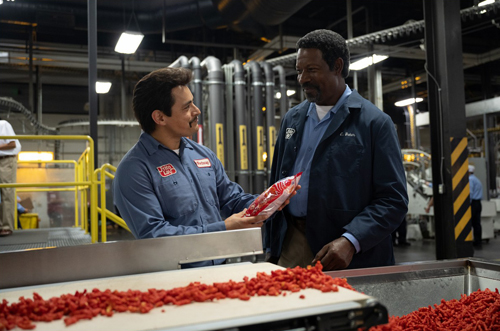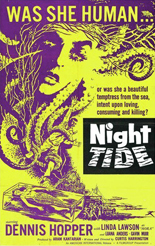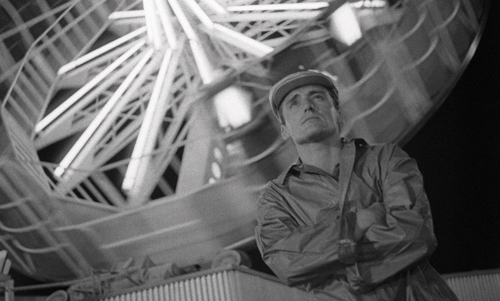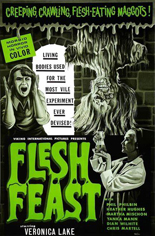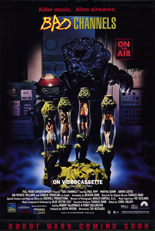
 On the AM dial, KDUL is gearing up for a big night. The station’s switching formats from polka to rock ’n’ roll, with DJ Dangerous Dan O’Dare (Paul Hipp, The Last Godfather) manning the platters after an FCC-mandated hiatus. The promo plans include an on-site story by a TV reporter (MTV VJ Martha Quinn), but not an alien invasion.
On the AM dial, KDUL is gearing up for a big night. The station’s switching formats from polka to rock ’n’ roll, with DJ Dangerous Dan O’Dare (Paul Hipp, The Last Godfather) manning the platters after an FCC-mandated hiatus. The promo plans include an on-site story by a TV reporter (MTV VJ Martha Quinn), but not an alien invasion.
Yet Bad Channels wouldn’t be a Full Moon film without the unplanned. A UFO brings two visitors to the KDUL studio: a robot with baby-blue peepers and a creature with a giant rock head “like a turd with a porthole window.” These alien beings cover the station in fuzzy green mold and abduct female listeners through the airwaves. Because this is a Charles Band production, the ladies shrink as they’re collected into miniature glass tubes.
Bad Channels’ gimmick is that immediately before abduction, each woman — from a sexy waitress (Charlie Spradling, Puppet Master II) to a sexy nurse (Melissa Behr, Ring of the Musketeers) — imagines herself cavorting in a music video, which director Ted Nicolaou (TerrorVision) shoots in full. Although the score comes from 1970s rock dinosaurs Blue Öyster Cult, the videos feature other songs, all unknown, from other bands, all unknown. Showcasing a group calling itself Sykotik Sinfoney, the third clip gives us the Full Moon catalog’s most frightening and/or disturbing sequence. Would you expect anything less from a makeup-dependent metal act whose members include Crusty Udder and Stankly Poozle?
Coming from Full Moon’s golden age — you know, when 45 minutes marked the halfway point, not the end — Nicolaou’s movie is an ambitious mix of science fiction and light satire, like George Pal’s The War of the Worlds meets Roger Corman’s The Little Shop of Horrors — but insipid, because its groupie mom had sex with Trixter in the alley. Still, something dumb can be mighty entertaining, which this is. Watch for an end-credits stinger with Tim Thomerson reprising his Dollman role for a few seconds — all the justification needed to bring Behr’s still-shrunk nurse back for Dollman vs. Demonic Toys the following year, and all the proof Band’s brain was decades ahead of Kevin Feige’s. —Rod Lott

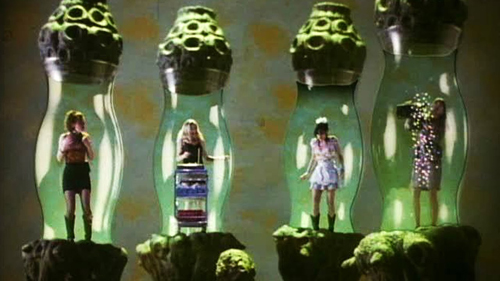
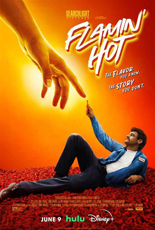
 In most biopics, the truth is often tangled, even fabricated. While I know many people already look at them as reality stretched to a breaking point, I tend to give the benefit of the massive doubt with cultural biopics I’m more entertained by.
In most biopics, the truth is often tangled, even fabricated. While I know many people already look at them as reality stretched to a breaking point, I tend to give the benefit of the massive doubt with cultural biopics I’m more entertained by. 